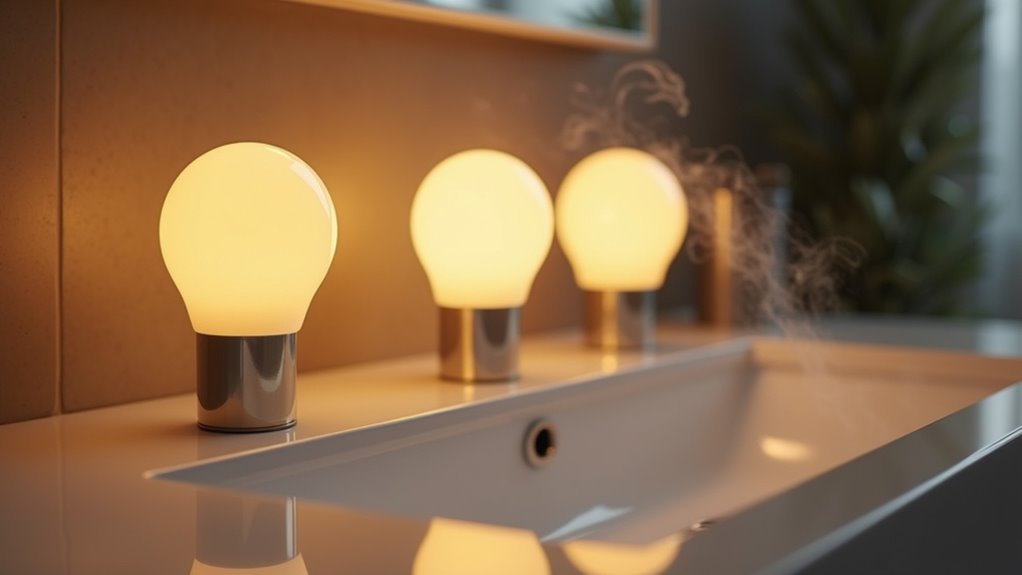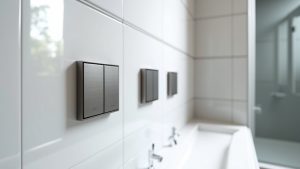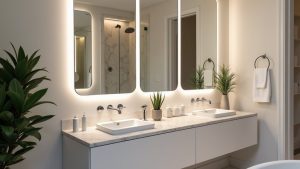When selecting 2-pin light bulbs for a bathroom, the top options include GU10, MR16, and G4 models. GU10 bulbs offer energy-efficient LED choices and are ideal for damp-rated areas. MR16 bulbs are low voltage and provide versatile beam angles, enhancing lighting quality. G4 bi-pin LED bulbs are perfect for compact spaces, consuming minimal wattage. Each option contributes to energy savings in bathroom lighting. For a deeper understanding of their features, benefits, and installation tips, further insights await.
Key Takeaways
- GU10 LED bulbs are energy-efficient, available in damp-rated options, and consume only 4W to 7W, suitable for bright bathroom lighting.
- MR16 LED bulbs provide low voltage operation, ideal for damp areas, and offer versatility in beam angles while being energy-efficient.
- G4 bi-pin LED bulbs are compact, perfect for small spaces, and consume just 1.5W to 2W, making them excellent replacements for halogen bulbs.
- Dimmable GU10 and MR16 options enhance brightness control, allowing for customization of ambiance while saving energy.
- Ensure proper installation by checking the pin spacing and type to maintain optimal performance and safety in bathroom environments.
Understanding 2-Pin Bulb Bases
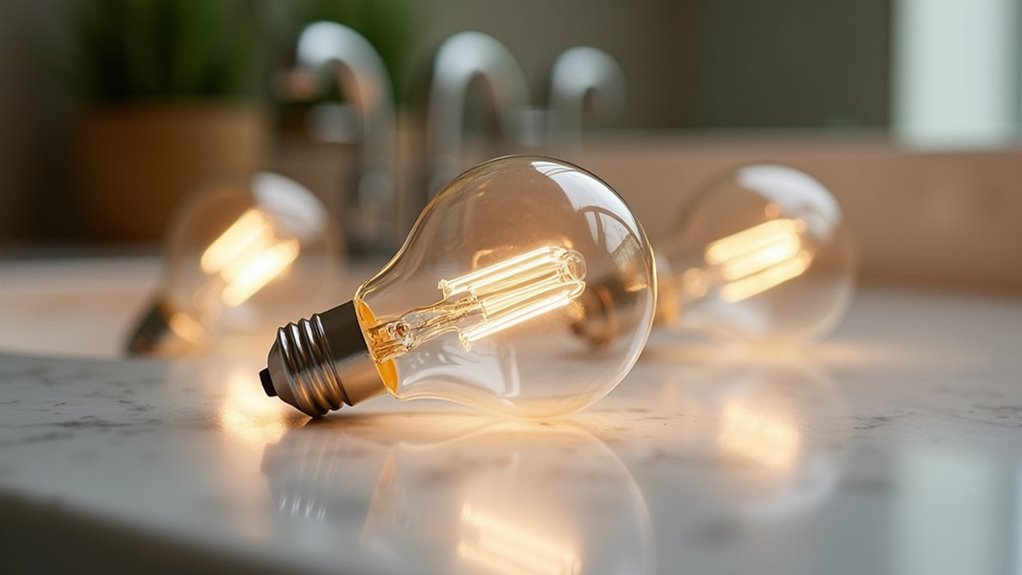
Understanding the intricacies of 2-pin bulb bases is essential for selecting the appropriate lighting solutions. Bi-pin bases, often designated by the letter ‘G’ followed by a numeric value, indicate the spacing of the pins in millimeters.
Key types include G4, GU10, and G9, each serving different lamp types and wattages. Ensuring bulb compatibility and proper voltage matching—12V for G4 and 240V for GU10, for example—is critical for performance. Identifying your bulb’s pin spacing and diameter is vital to ensure the right replacement is selected. Additionally, knowing that bi-pins are designed to prevent high electricity consumption can aid in making energy-efficient choices.
Installation mechanisms vary; GU10 uses a twist-and-lock method, while others simply push into sockets. Increasing energy efficiency is achievable with LED options available for most bi-pin bases, allowing compatibility with existing fixtures while enhancing longevity. Accurate identification of pin spacing and diameter ensures optimal fit and function.
Key Considerations for Bathroom Lighting
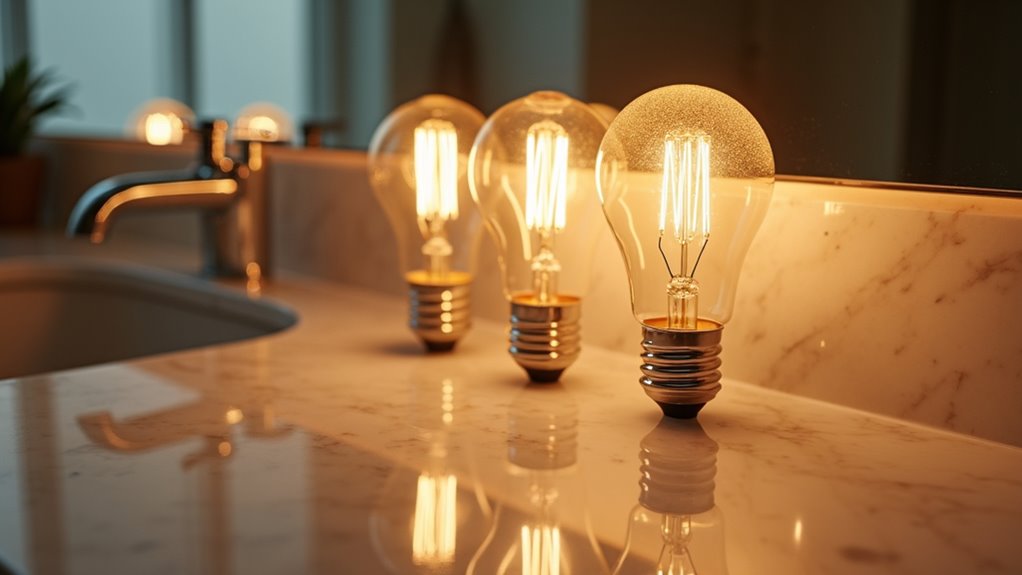
Selecting the right lighting for bathrooms involves navigating several key considerations that impact both functionality and safety.
Bathroom safety is critical, guided by IP ratings that indicate a fixture’s protection against water and steam. Proper fixture placement is essential, especially around mirrors for task lighting, to ensure optimal brightness levels.
Bathroom safety is paramount, emphasizing the importance of IP ratings and strategic fixture placement for optimal lighting around mirrors.
Lumens brightness defines the required lighting, with small bathrooms needing 4,000-5,000 lumens and specific vanity lighting suggested to provide 1,500-4,000 lumens. Color temperature also plays a pivotal role; warm white (2700K-3000K) may create a cozy ambiance, while cooler temperatures (4000K+) enhance visibility for tasks.
Finally, a layered approach to lighting—combining ambient, task, and accent types—provides versatility for various activities and moods. Additionally, energy-efficient LED lighting options like dimmable fixtures can offer better control over brightness, thus improving energy savings.
Top 2-Pin Bulb Recommendations
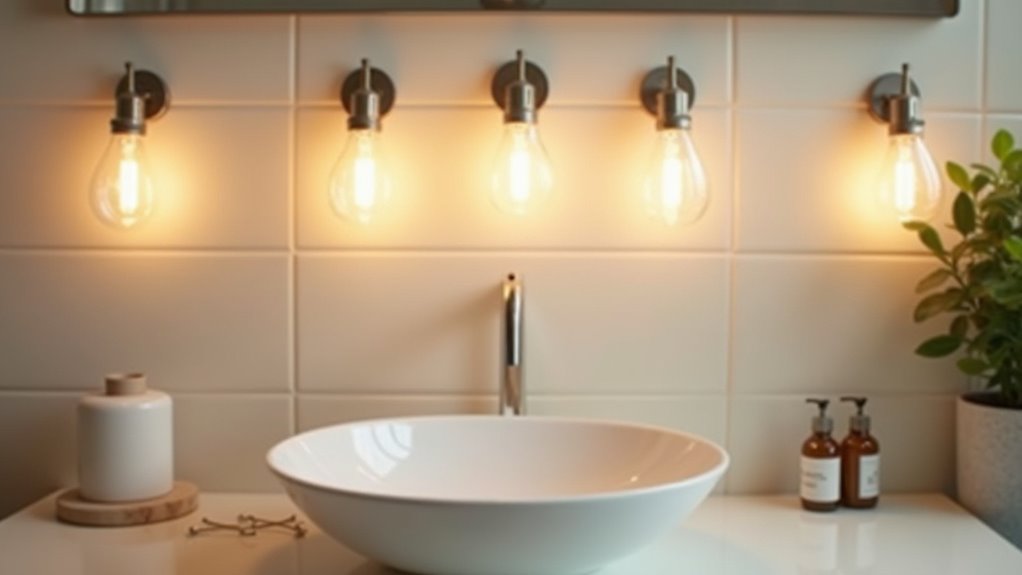
Choosing the right 2-pin light bulbs for bathrooms can significantly enhance both functionality and aesthetics.
GU10 base LED bulbs are a top choice, offering damp-rated options and various color temperature choices—from warm white to daylight. They deliver substantial energy savings with a consumption of just 4W to 7W, and many are dimmable, allowing for customizable brightness levels.
Another strong candidate is the MR16 base LED bulb, which operates on low voltage and is suitable for damp areas, providing energy efficiency and beam angle versatility.
Lastly, G4 bi-pin LED bulbs excel in compact spaces, replacing halogen bulbs while consuming only 1.5W to 2W.
Each option maximizes LED bulb benefits and caters to diverse lighting needs in bathroom settings.
